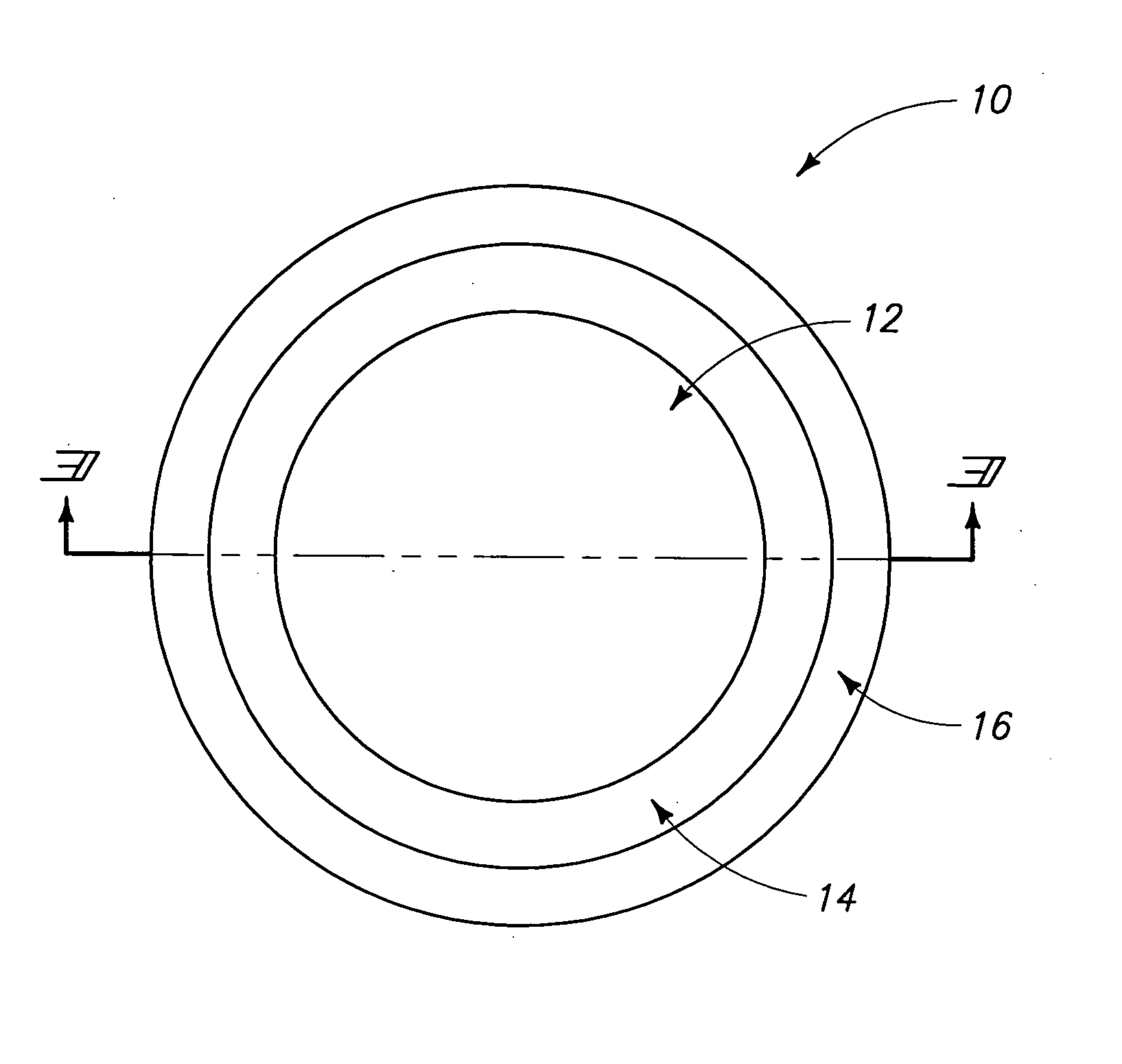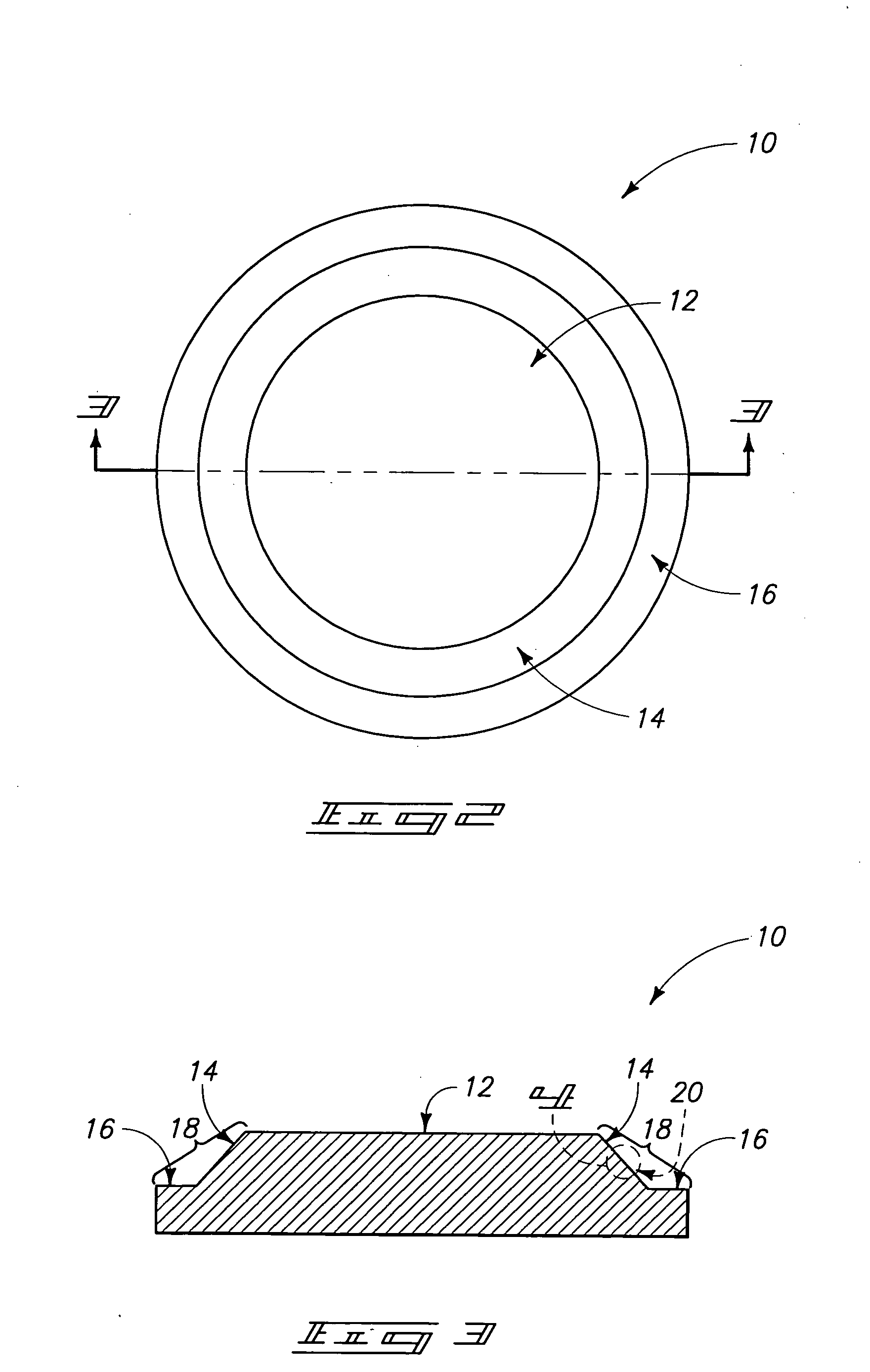Methods of treating non-sputtered regions of PVD target constructions to form particle traps
a technology of non-sputtered regions and traps, applied in vacuum evaporation coatings, electrolysis components, coatings, etc., can solve the problems of large particle formation, large particle formation, and affecting the desired properties of the film
- Summary
- Abstract
- Description
- Claims
- Application Information
AI Technical Summary
Problems solved by technology
Method used
Image
Examples
Embodiment Construction
[0030] This disclosure of the invention is submitted in furtherance of the constitutional purposes of the U.S. Patent Laws “to promote the progress of science and useful arts” (Article 1, Section 8).
[0031] The invention encompasses new textures which can be formed on one or more surfaces of a PVD target or target / backing plate assembly, and utilized for trapping sputtered materials which redeposit on the target or assembly. In a particular aspect, curved projections (such as, for example, a bent scroll pattern) are formed on non-sputtered surfaces of a target or target / backing plate assembly to form particle trapping areas. The non-sputtered surfaces can include sidewall surfaces, flange surfaces and / or non-sputtered surfaces along a sputtering face. The projections can be exposed to particles to roughen surfaces of the projections. The projections can be considered to form a macro-scale roughness of a trapping area, and the roughened surfaces of the projections can be considered t...
PUM
| Property | Measurement | Unit |
|---|---|---|
| Pressure | aaaaa | aaaaa |
| Height | aaaaa | aaaaa |
| Height | aaaaa | aaaaa |
Abstract
Description
Claims
Application Information
 Login to View More
Login to View More - R&D
- Intellectual Property
- Life Sciences
- Materials
- Tech Scout
- Unparalleled Data Quality
- Higher Quality Content
- 60% Fewer Hallucinations
Browse by: Latest US Patents, China's latest patents, Technical Efficacy Thesaurus, Application Domain, Technology Topic, Popular Technical Reports.
© 2025 PatSnap. All rights reserved.Legal|Privacy policy|Modern Slavery Act Transparency Statement|Sitemap|About US| Contact US: help@patsnap.com



